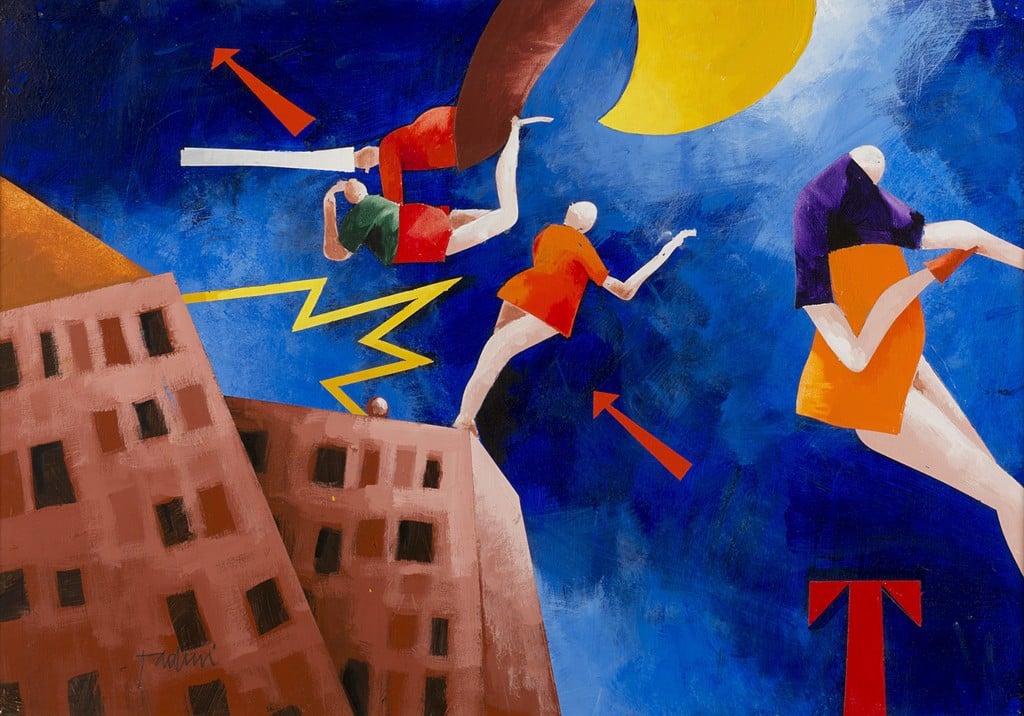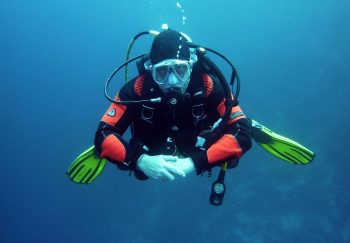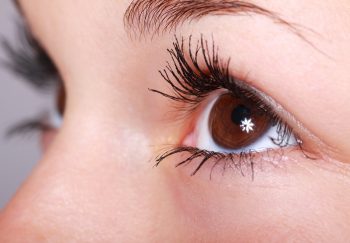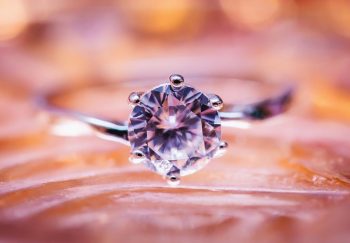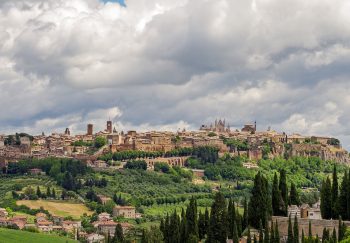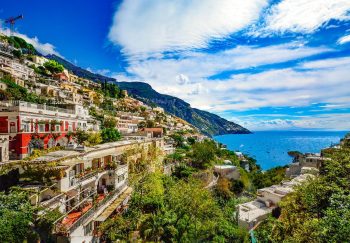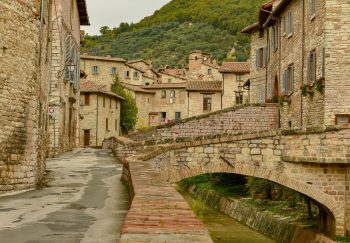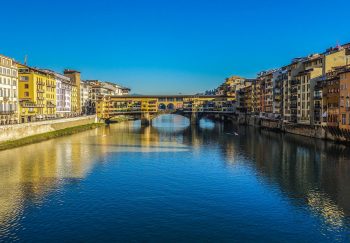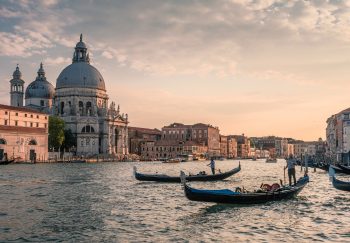Contemporary and modern Art? It is captivating and sometimes mysterious. It could be the Old World, where you can find the most classic and sacred art.
Let’s begin a fascinating journey through contemporary and modern art in Sicily. Unexpected surprises will surprise you.
We cross Palermohistoric center, the so-called Felicissima district via Sant’Anna. The Civic Gallery of Modern Art has been moving here since 2006.
This three-floored gallery displays over 200 works. It was opened in 1910 and has since been renovated.
The Gallery was enriched by two sculptures donated by Giorgio De Chirico “Ettore e Andromaca” and “Oreste e Pilade” in 2007.
Let’s walk another 200 meters and we will come to Palazzo Riso, the Museum of Contemporary Art in Sicily.
The Polo Regional Museum of Modern Art of Palermo can be found within the Palazzo Belmonte Riso. It dates back to the 18th century and is owned by the Ventimiglia Princes of Belmonte. This is a fascinating example of a private residence with a high status that combines the best of the late Baroque with neoclassical rigor.
The Museum’s permanent collection contains works that relate to a particular theme, such as the connection with the Sicilian Territory. The path is divided into six sections. Some sections feature paintings by Alessandro Bazan while others showcase the “erasures” of Emilio Isgro a rebellious artist who is well-known worldwide. The controversial Salvo is a troubled, inconsolable hyperrealist, and abstract painter.
Another interesting work is that of Antonio Sanfilippo. He was one of the first European abstract artists. His works are also on display in the Modern and Contemporary Gallery La Salerniana. It is located in the Palazzo della Vicaria (17th century), in the heart of Trapani. It contains over 160 works, dating back to 1950, and includes some of the most prominent artists of contemporary and modern art: C. Accardi. A. Sanfilippo. P. Consagra. L. Guerrini. F. Mauri. C. Alfano. C. Verna. L. Patella. N. Carrino. E. Marcheggiani. T. Simeti. G. Clamps. C. Lorenzetti. L. Boille. V. Bendiniavino. Tadini.
Palermo hosts also a Civic Gallery of Modern Art and Gipsotheque “Empedocle Restivo” in Via Dante Alighieri. The gallery displays a collection of sixty plaster sculptures, including some carvings by the Sicilian artist Ettore Ximenes (Palazzo Ziino Tele. +39 091 7407633).
Let’s go to Bagheria and then towards Renato Guttuso. He was the father of modern painting in the first half of the twentieth century. His Vucciria is a famous and emotional work. It has sharp lines and strong colors. His unmistakable style was similar to Picasso’s, with some expressionist influences.
Let’s now go to the magnificent eighteenth-century Villa Cattolica. It is located on a small hill that overlooks the Gulf of Palermo and Conca d’ Oro. Since 1973, Guttuso’s works and those of the 1900s have been displayed here. You will also find a selection from the films of Giuseppe Tornatore.
After a final look at Villa Dei Mostri, we move on to Castel di Tusa near Messina and enjoy a dip in its beautiful waters.
We are now available for Fiumara d’Arte.
You can begin at the seafront in Santo Stefano di Camastra with the work Finestra Sul Mare, created by the contemporary artist Tano Festa.
It’s an outdoor gallery of art that runs from the Tyrrhenian coast up to Nebrodi Park. Fiumara dart project was created by Antonio PRESTI, a Sicilian entrepreneur and contemporary art collector who, in 1982, commissioned Pietro Consagra to create a funerary monument to his father’s memory.
He announced the creation of an outdoor museum in 1986 when the work was completed. The museum displays contemporary sculptures with the goal of developing the area by discovering hidden and undiscovered places. This is possible because of the ability to combine art and nature.
Let’s continue to the east along the Tyrrhenian coastline until we reach Messina, which is the main town in this region. The Gallery of Modern and Contemporary Art Lucio Barbera is worth a visit.
Let’s take a look at the best European and Italian artists of various art movements, including Abstractionism, Avant-garde, and Futurism, as well as the work of some of the most important contemporary local artists.
The Lipari island, which is part of the Aeolian archipelago’s enchanting Lipari , hosts Mare Motus. This prestigious permanent exhibition features contemporary art from around 40 artists.
Many works and installations are on display, including some that were inspired by the location of the exhibition (formerly a penal colony, then a place for intellectuals and politicians during the 20 years of Fascist Era). They were executed by Matteo Basile and Tahar Ben Jelloun.
Let’s continue on our journey to Catania and along the Ionian coast. Castello Ursino is the Civic Museum. It also houses a picture gallery, some archaeological and numismatic collections, and hosts periodic exhibitions by internationally renowned contemporary artists.
We found the Galleria di Arte Moderna-Ex Convento di Santa Chiara in this historic district of Catania at 26 via Castello Ursino. It has interesting periodic exhibitions.
It is strategically located just a few steps away from Piazza Duomo, Piazza Universita, and the Civic Museum. Here you will find an entire block of land, which was once home to a liquor factory, and now the House of Art. It is the Brodbeck Foundation, which was commissioned by Paul Brodbeck. This Sicilian-Swiss entrepreneur was at the end of 2007.
The foundation, which is to transform the entire citadel into a reference point OF contemporary arts”, begins in the vicinity of San Cristoforo.
The “Paolo Brodbeck Collection-Italian painting 1949/2010” highlights collectors’ interest in Italian art. It goes from Carla Accardi to Piero Dorazio, Piero Guccione, Renato Guttuso, Mimmo Paladino, Michelangelo Pistoletto, Mimmo Rotella, and Giulio Turcato.
The magnificent Via Crociferi is located right in front of St. Benedetto’s arch. We then find the MacS- Museo Arte Contemporanea Sicilia in the Small Badia of Monastery. It is home to many exhibitions and artistic events as well as prestigious permanent collections such as Miguel Uribe Escobar.
The Museo Emilio Greco is located in San Francesco d’Assisi Square, on the second floor Palazzo Gravina Cruyllas. This square is well-known for being the birthplace of Vincezo Bellini.
Emilio Greco‘s work, one of the most fascinating artists of the 20th century, is exhibited in some of the most prestigious museums worldwide, including the Tate Gallery, London, St. Petersburg, American museums, and the Vatican. Two of his most notable works are the bronze door of the Cathedral of Orvieto, and the monument to Pinocchio at Collodi Park. In 1994, the artist inaugurated the museum in Catania to honor the famous Catania sculptor. It was made after his generous donations to Catania. It houses a permanent collection that includes 150 graphic works from Greco made between 1955-92.
Continue on towards the Central Station along the Via Vittorio Emanuele. Let’s take a look at Palazzo Platamone also known as Palazzo Della Cultura and Palazzo Valle. These two buildings are home to the Puglisi Cosentino Foundation.
The port of Catania was also transformed into an open-air museum by eight international artists: Okuda, Rosh333, Intersni Kazki, VladyArt, and Okuda from Spain.
These silos, which are 10 stories high, have been described as the largest wall painting anywhere in the world. They were created by Alexandre Farto (alias Vhils), a Portuguese artist. This stunning 21st-century monument is a modern narration of Sicilian myths, legends, and stories: Colapesce watches illegal immigrants land, Bellini’s colorful Muse, Ulysses escape from Polifemo, and the perpetual motion of Scilla, Cariddi, and the Minotaur.
The La Verde La Malfa Foundation is located within walking distance of the city. It houses several permanent collections of contemporary and modern art, with a special focus on the work of Sicilian artists. As soon as you pass the main gate, the museum tour will take you to the Park of Art. This outdoor museum features a variety of contemporary sculptures and art installations. The Park joined the GRANDI GIARDINI Group in 2015 and hosts many performances, concerts, and art performances.
Mount Etna is located at the foot of the Museum Incorpora. It is housed in Linguaglossa’s former Casa del Fascio. Here you will find the collection of Salvatore Incorpora (Calabrian master sculptor, multifaceted artist, born in Sicily). We can see the great artists of the 20th century Sicilian in his nativity scenes and his sculptures and canvases. The expressionism and humanity of Renato Guttuso. The chromaticism of Giuseppe Migneco.
We find small gardens just ten kilometers from Agrigento’s Valle dei Templi. It’s located in a Kasbah that is made up of seven mini shortcuts linking one another. This is Favara’s Farm Cultural Park. According to the British Blog Purple Travel, it’s the sixth most popular tourist destination for contemporary artists.
Five different galleries are located in the park, and there are new temporary exhibitions every four months.
Art combines social innovation and urban renewal projects once again.
Land art lovers should not miss a visit to the Cretto di Burri (crack), in Gibellina (Trapani), which is a large work of art by Alberto Burri.
To celebrate the centenary of Alberto Burri’s birthday, the Guggenheim has created a special exhibition. He designed the Cretto di Burri to crystallize the town following the 1968 Belice earthquake. It is a charming place with the ruins of Ibbiddina, which are covered in white cement, as well as the labyrinth for the silent (labirintodei silenziosi), that surround it.
The Museum of the Mediterranean Plots is a museum that the Foundation Orestiadi created in Gibellina in the Baglio of Stefano. It houses one of the best collections of contemporary art in Italy. You will find the works of many avant-garde Italian artists like Arnaldo Pomodoro and Paladino as well as other members of the Group Form One such as Consagra Accardi, Dorazio, or Turcato as well as other great exponents of international contemporary artists such as Beuys and Matta, Scialoja and Corpora.
The “Fontana del Vino” sculpture is located in Marsala (Trapani). Salvatore Fiume’s works are displayed in many of the greatest museums around the globe, including the Vatican museums and the Hermitage Museum, St. Petersburg, MoMA, New York, the Puskin Museum, Moscow, and Gallery of Modern Art, Milan.
